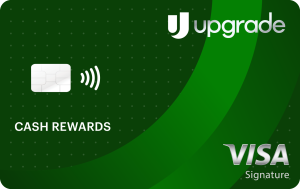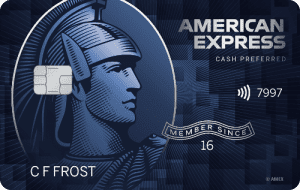Table Of Content
Key Takeaways
- Credit cards are a very practical tool, but there is a constant surge in illicit activities, including identity theft and fraud.
- The majority of the time, you can prevent it by taking extra precautions to reduce risks and making sure to adhere to security advice.
- Scammed? Avoid panicking and be calm. Think rationally and keep in mind that you have people you may turn to for support.
With the advance in technology, scammers have been keeping themselves up-to-date, finding more and more means to propagate their illegal credit card scams. They are becoming shrewder and more adept in technology to search, find and steal your information.
In recent years, it has become more commonplace to make purchases online or use contactless payments. Unfortunately, this can increase the vulnerability to credit card fraud. In this chart, using Nilson Report data, we can see that worldwide credit card fraud has increased from $13.7 billion to $28.65 billion .
This article will help you recognize some of the more common scams and tactics.
What Is Credit Card Fraud?
Credit card fraud is a type of financial crime where a person uses someone else's credit card information without their permission to make purchases or withdraw cash.
This can be done in various ways such as stealing physical credit cards, intercepting card information through hacking or skimming, or using false identities to obtain credit cards.
The damage caused by credit card fraud can range from unauthorized charges to loss of personal information, and can have long-term financial and credit consequences for the victim.
What Type Of Credit Card Fraud Is The Most Common?
The most common type of credit card fraud is “card-not-present” fraud, which refers to fraud that occurs when a criminal makes an unauthorized purchase using a stolen credit card number, without physically having the card. This type of fraud often occurs through online transactions, phone orders, or through mail order/telephone order (MOTO) transactions.
Another common type of credit card fraud is skimming, where criminals attach small, hidden devices to card readers (such as ATM machines or gas pumps) to steal credit card information.
The Most Popular Types Of Credit Card Fraud
Here are some of the most popular types of credit card fraud:
-
Hack Your Computer
One of the typical credit card fraud happens because scammers can bypass computer security.
Usually, the scammer takes your information directly from your computer's router. They can take it from an online shopping purchase, your keyboard input, compromised and unsecured websites, or even straight from a USB drive.
A computer security problem is more likely to happen when you use public or unsecured wifi.
You may be unaware that your personal information is at risk for fraud when sitting comfortably at Starbucks, enjoying your latte while privately shopping online. A public server does not provide the safety and privacy that a private server does.
Top Offers
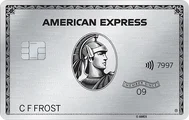
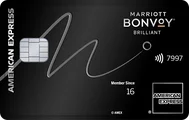
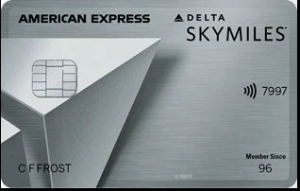
Top Offers
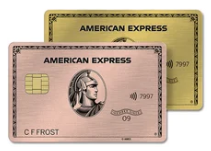
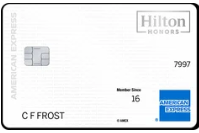
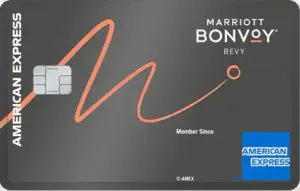
Top Offers From Our Partners
-
Credit Card Skimming
Scammers initiate this style of fraud when you use your credit card for legitimate transactions.
A dishonest employee (usually in connivance with the thief) uses a ‘skimmer’ (a hand-held electronic device) or photographs your card or receipts and steals the information for later use to steal money.
Once they are able to obtain your personal details, the scammer would find a way to access your account to make unauthorized purchases or withdraw cash. You expose yourself to this scam when you do internet transactions or in other businesses (like restaurants) where they take your card out of your immediate view for swiping.
-
Credit Card Phishing
Fraud artists sometimes pose behind a seemingly trustworthy website to lure people in. Once the unsuspecting cardholder clicks a malicious link, it becomes easy for the scammer to acquire their user names, passwords, personal identification numbers (PINs), and other personal details.
Usually, fake websites will send thousands of bogus emails to consumers to obtain personal information. The usual technique of scammers is to send emails or make phone calls to consumers while pretending to be from their financial institution. They will claim that they have detected suspicious activity on your card or a problem with their network so they can gain access to your credit card details.
When the cardholder responds, they are on a fake website where they enter their credit card number and other personal information. The fake website would then ask the customer to confirm their details so the alleged institution can “investigate” the suspicious activity. The thieves can access the account and carry out their illegal activities by providing the information.
-
Fake Wi-Fi Networks
This is a variation of the ghost terminals scam and it has gained notoriety in a number of countries globally.
The ploy is very simple: scammers set up a fake free wi-fi network in a popular public area and when unwary users access the network, the thieves capture their account information.
If they are successful, they will be able to get the credit card details and electronic banking login information of the users. After that, it’s easy for the fraudsters to use the information to enrich themselves dishonestly.
-
Identity Theft
Although it is not as common as the first three scams, this type of fraud happens and when it does, it can have the most severe effect on the victim. Therefore, it is very important that you protect yourself from it.
Identity theft is a type of fraud when another person steals your identity by using your personal information to make unauthorized transactions using a credit card under your name.
This happens when a thief applies for credit or a new credit card using your name. First, they will steal your supporting documents which they will submit to the card companies to support their deceptive applications. Most banks have rigid safeguard measures to prevent identity theft. The most important one is that they will only accept original documentation. Another form of control is to confirm your identity directly with your employer thru a phone call.
However, sophisticated criminals can now fabricate documents that can appear like originals and set up fake phone lines to pose as your employer’s office. It seems that even if you and the banks put in a lot of safeguard measures to prevent identity theft, the scammers find a way to get around them.
-
Online Gaming Fraud
It’s difficult for scammers not to notice the kind of money that flows in this online environment. These gaming sites have become a hotbed of credit card fraud through account takeovers.
The technique is quite intricate. Scammers insert malware programs or phishing software in popular gaming sites and steal the player’s user ID and password. The thieves then use those account details to make in-app purchases, sell off the virtual goods they have acquired or purchased in the game. Others will try to gain full access to credit card details and further steal from their victims.
-
Hack Retailers’ Database
Analysts reported at least 98 security breaches on their databases in 2022. Some well-established merchants, such as Uber, are just some of the victims. Most became vulnerable because of a flaw in their online payment systems or within the physical stores.
The alarming news is that not only retailers are falling victim to data breaches but also payment gateways, banks, government websites, and other businesses.
How do hackers make money off the information they get from data breaches? Well, they will sell them batch by batch to websites that won’t appear in Google searches.
From there, the scammers try each card on the list to find the active ones with available credit. This would happen even months after the breach has occurred. If the company finds out about the hack, it will usually alert its customers and advise them to request a new credit card.
-
Subscription Scams
You’ve probably had the experience of signing up for a free trial and forgetting to cancel later. It’s not a problem if you subscribed to a legitimate company because they will stop the service and payments conveniently.
Unfortunately, some creative scammers are tricksters are using the magnet of free trials, enticing consumers with products and services that include weight-loss pills, health foods, pharmaceuticals, supplements, and anti-aging treatments.
After you give them your credit card information, they lock you into a monthly payment that is nearly impossible to back out from so you get stuck for some time. If you’re lucky to receive any product at all, they are often different from what they advertised, or of inferior quality, or insufficient quantity.
-
Misleading Advertisements
You can find an avalanche of attempts to ask people to sign up for new credit card accounts. Whether in print media, on television, billboards, or over the Internet.
Hundreds of offers come, guaranteeing easy credit, low rates, waived fees, zero interest, or high credit limits. They mainly target individuals who do not qualify for accounts with well-entrenched credit card companies.
When consumers respond to these ads, they often end up on a fake website. There, they’re asked to enter personal details, including credit card information. Once the scammers have this data, it becomes much easier for them to take control of accounts and carry out their fraudulent activities.
-
Fake Call
You can receive a call from someone claiming that they are from your credit card company’s fraud department. Their spiel will have to go along the line of a suspected suspicious activity they discovered on your account.
Then, you need to provide some information to help them in the verification process. They will insist that they need the info to check if someone has compromised your account when in fact, they will be the ones intent on compromising it.
Another form happens when you’re relaxing on vacation or taking your rest during a business trip when your hotel phone rings in the middle of the night. The caller claims to be from the front desk saying that there’s been a problem with the hotel’s computer system and they need your credit card information again.
Scammers will usually have some information ready: your name, address, or account number. They can use to smoothly convince you that it’s a legit call.
They will try to extract more information from you. The logic: the more details they have, the higher chance they can commit fraud. One of the most valuable information they want is the security code on the back of your credit card so don’t give that up.
-
Processor Breaches
Comparable to the breaching of the merchant’s database, breaching the processor is another entry to commit fraud. The processor is the middleman that links the credit card issuer and the merchants.
As the name suggests, payment processors are the ones handling the transactions. While breaches involving them are less common than others, they’re still possible. The tricky part is that it’s harder for banks to trace the source of the breach. The downside is that even a single incident can put hundreds or thousands of credit cards at risk in just minutes.
As a cardholder, there’s very little you can do to protect yourself from merchant or processor breaches. You have no control over the database so you just have to trust the company that they have installed adequate safeguards against data breaching or leaks.
Your part on this is to regularly monitor your credit card bill. If you see anything suspicious or irregular, report it to your issuer immediately. If your card company offers a fraud alert, take advantage of the service especially if they don’t charge anything for it.
How To Detect Credit Card Fraud?
Here are some ways to detect credit card fraud:
Monitor your accounts regularly: Check your credit card statements and online account frequently to ensure all transactions are valid.
Look for unusual transactions: Be on the lookout for transactions you don’t recognize, especially those made in foreign countries or for large amounts.
Watch for changes in your account status: Check your account status regularly to ensure there have been no unauthorized changes to your account information, such as your address or contact information.
Look for notifications from your bank or credit card issuer: Banks and credit card issuers often use alerts to notify customers of suspicious activity, so be sure to check for these alerts and follow up promptly.
Review your credit report: Checking your credit report regularly can help you detect fraud early on, as it may show new accounts or inquiries that you did not authorize.
Protect your personal information: Use strong passwords, don’t give out your credit card information, and be wary of suspicious emails and phone calls.
Use a credit monitoring service: Consider using a credit monitoring service that can alert you to potential fraud and help you take action to resolve it.
It's important to stay vigilant and monitor your credit card accounts regularly to help detect fraud early and prevent further damage. If you suspect fraud, contact your bank or credit card issuer immediately.
How To Report Credit Card Fraud?
If you suspect credit card fraud, here are the steps to follow to report it:
Contact your credit card issuer immediately: Call the customer service number on the back of your card and report the fraud. They will be able to freeze your account and prevent any further unauthorized charges.
Report the fraud to the authorities: Contact your local police department and file a report. This will create a paper trail and may help you recover any stolen funds.
Notify the credit bureaus: Report the fraud to the three major credit bureaus: Experian, Equifax, and TransUnion. They will place a fraud alert on your credit report, which will make it more difficult for criminals to open new accounts in your name.
Keep records: Keep a detailed record of all correspondence with your bank, credit card issuer, and the authorities.
Follow up: Follow up with your bank and credit card issuer to ensure that the fraud has been resolved and that you will not be held responsible for any unauthorized charges.
It is important to act quickly and follow these steps to minimize the damage caused by credit card fraud and to help protect your financial information. If you need further assistance, your bank or credit card issuer should be able to help you throughout the process.
How To Report Credit Card Fraud?
If you suspect credit card fraud, here are the steps to follow to report it:
Contact your credit card issuer immediately: Call the customer service number on the back of your card and report the fraud. They will be able to freeze your account and prevent any further unauthorized charges.
Report the fraud to the authorities: Contact your local police department and file a report. This will create a paper trail and may help you recover any stolen funds.
Notify the credit bureaus: Report the fraud to the three major credit bureaus: Experian, Equifax, and TransUnion. They will place a fraud alert on your credit report, which will make it more difficult for criminals to open new accounts in your name.
Keep records: Keep a detailed record of all correspondence with your bank, credit card issuer, and the authorities.
Follow up: Follow up with your bank and credit card issuer to ensure that the fraud has been resolved and that you will not be held responsible for any unauthorized charges.
It is important to act quickly and follow these steps to minimize the damage caused by credit card fraud and to help protect your financial information. If you need further assistance, your bank or credit card issuer should be able to help you throughout the process.
Bottom Line
Think many times before you put information about yourself on the Internet. Should you need to do it, turn on the privacy settings. Prevent anyone from accessing your personal information. Some veteran identity thieves need your birthdate or phone number to start the ball rolling.
Shred documents that contain personal or financial information. You can go as far as putting locks on your physical mailbox to prevent mail theft. Protect yourself at all times, especially in cyberspace, by regularly looking out for suspicious transactions or activities on your accounts thru your account history.
Credit card scams are evolving and can happen anytime in many forms. But being alert and staying informed can help protect yourself from falling victim to these thieves. Fraud does not discriminate, and a few extra cautions will help.
Turning on your privacy settings or taking a few extra minutes to call and verify unsolicited emails before responding. These and other actions can save money by locking out thieves from your accounts.
Top Offers

